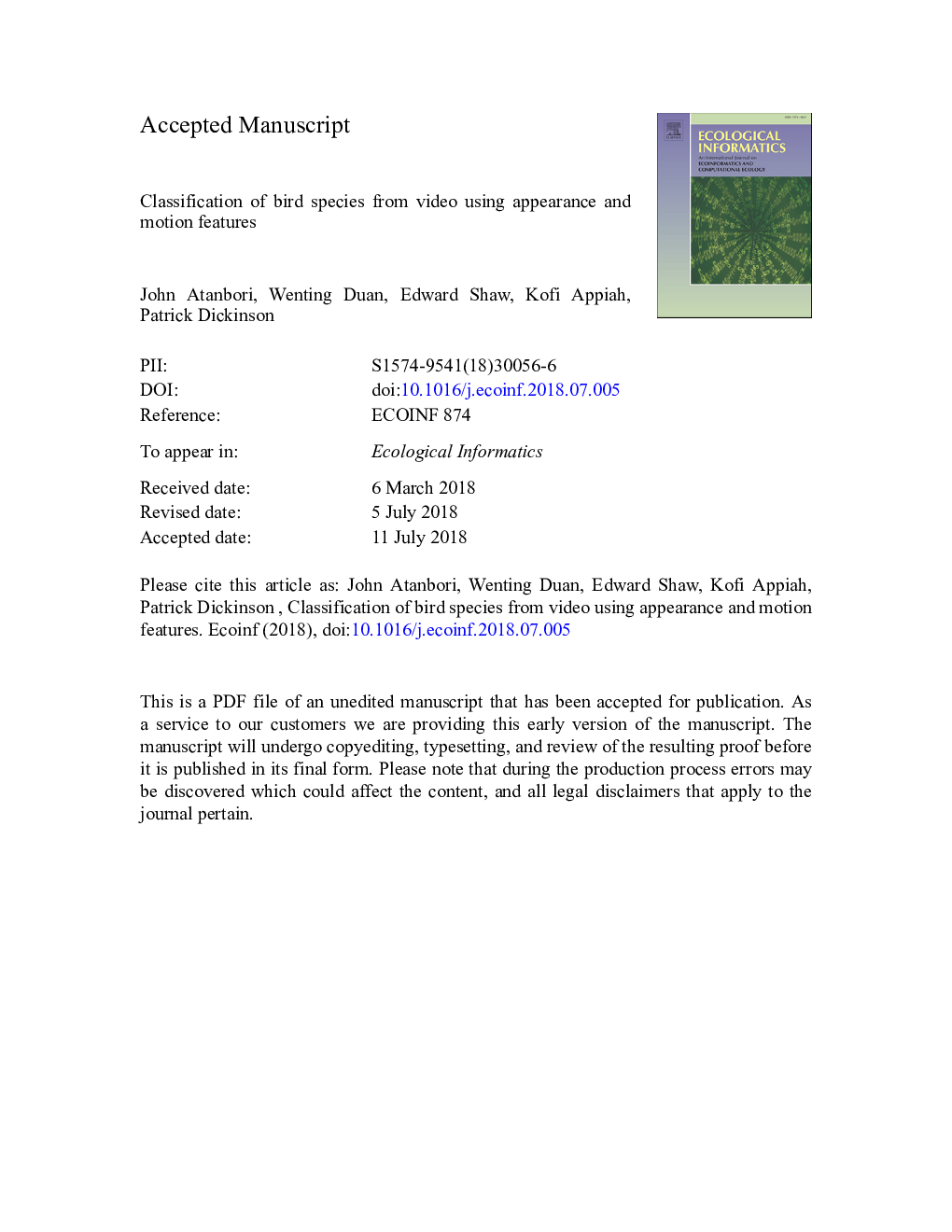| Article ID | Journal | Published Year | Pages | File Type |
|---|---|---|---|---|
| 8845782 | Ecological Informatics | 2018 | 45 Pages |
Abstract
A number of existing algorithms are able to classify bird species from individual high quality detailed images often using manual inputs (such as a priori parts labelling). However, deployment in the field necessitates fully automated in-flight classification, which remains an open challenge due to poor image quality, high and rapid variation in pose, and similar appearance of some species. We address this as a fine-grained classification problem, and have collected a video dataset of thirteen bird classes (ten species and another with three colour variants) for training and evaluation. We present our proposed algorithm, which selects effective features from a large pool of appearance and motion features. We compare our method to others which use appearance features only, including image classification using state-of-the-art Deep Convolutional Neural Networks (CNNs). Using our algorithm we achieved an 90% correct classification rate, and we also show that using effectively selected motion and appearance features together can produce results which outperform state-of-the-art single image classifiers. We also show that the most significant motion features improve correct classification rates by 7% compared to using appearance features alone.
Keywords
Related Topics
Life Sciences
Agricultural and Biological Sciences
Ecology, Evolution, Behavior and Systematics
Authors
John Atanbori, Wenting Duan, Edward Shaw, Kofi Appiah, Patrick Dickinson,
